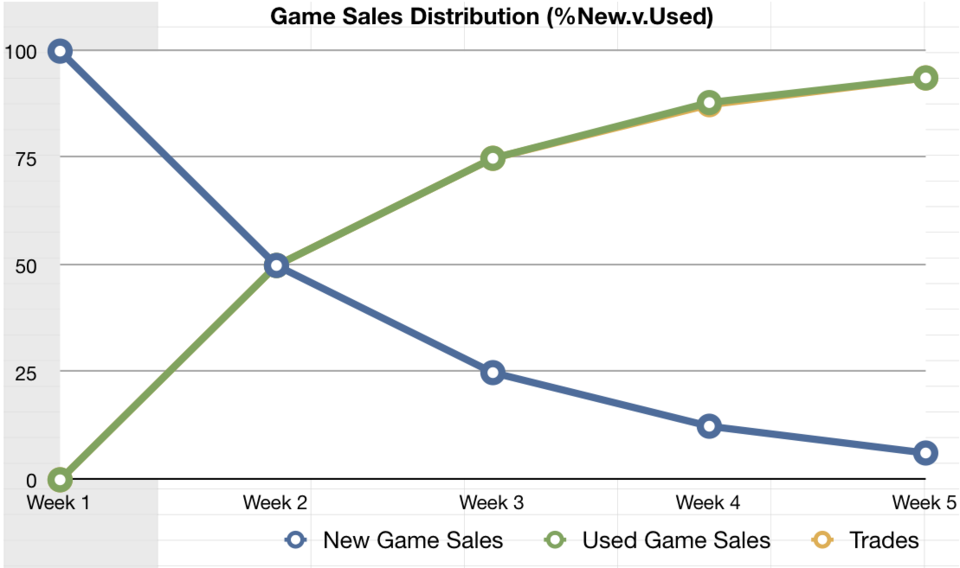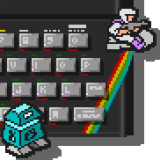Deconstructing the "Pro Trade-in Argument"
By Xantiriad 1 Comments
The pro game trading argument goes like this: "Trading is good because it allows players with less money to buy new games on release. Without trading, new games sales would be lower". Most game resellers, like GAME in the UK or Gamestop in the US, use this argument to defend their trade-in policy.
Scenario: 10 people buy the latest game on release. 5 people trade in that game every 7 days. 10 more people buy the game each week; repeat for 3 weeks. Assume that 80% of buyers will purchase the cheapest game (either new or used); the game costs 50, and the trade-in value is 25 and resale 45.
Week 1: New sales = 500; Trade in = 0; Trade Sales = 0
Week 2: New sales = 250; Trade in = 125; Trade Sales = 225
Week 3: New Sales = 100; Trade in = 125; Trade Sales = 360
Week 4: New Sales = 100; Trade in = 125; Trade Sales = 360
New Game Sales = 950 (19)
Trade Sales = 940 (21)
So basically, as the new game gets traded-in the volume of new games sales decrease. As traded in games can be resold more than once the new sales trail off dramatically after 2 or 3 weeks. So whilst the sales in week 1 are strong, more than 50% of the potential sales have been lost to slightly discounted used-game stock within 4 weeks. Publishers therefore have to make most of their money in the first 1 or 2 weeks.

This model doesn't always fit: for games that are less likely to be traded, such as popular online games like Modern Warfare 2, the new sales are preserved by the lack of resale stock.
So, whilst it is almost certainly true that trading games reduces the overall purchase cost, it doesn't necessarily boost demand for the retail copy; in fact, if anything, it fuels purchases of the resold copies of the game as much as it does the new retail ones. A quick look at any game sales chart shows these trends: games often come in high on the chart and then dramatically drop down after 2 weeks unless there is a reason to boost the retail copy (i.e. lack of used stock).
